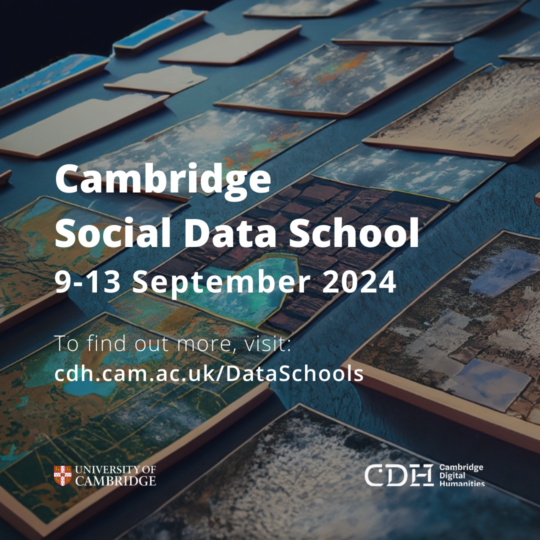| 14 May 2019 | 1:00pm - 4:00pm | IT Training Room, University Library | |
- Description
Description
This 3 hour workshop will introduce the fundamentals of computer vision: participants will learn how to make their own images searchable. It will cover instance-based recognition (or image matching); image classification with deep learning; image comparison; facial recognition; and image annotation. No prior knowledge of computer vision is required. Participants will need a laptop to which they have administrative access.
About the workshop leaders:
Dr Giles Bergel (University of Oxford)
Dr Giles Bergel is an academic book historian and a digital humanist. He is equally interested in how texts came into existence in books, and in how digital culture is changing the nature of the book (and much else besides). His interests include ballads, broadsides, chapbooks, typefaces, printers’ woodblocks, diagrams, copyright and book trade history. Giles is currently Digital Humanities Research Fellow for the Seebibyteproject in the Department of Engineering Sciences at the University of Oxford and also teaches digital humanities at University College London.
Leonardo Impett (CDH Visiting Methods Fellow)
Leo's research ambition is broadly to attempt to do for visual art what the Stanford Literary Lab has done for literary fiction: an approach which combines large-scale computational analysis with conventional criticism and theory. Doing computation on images (looking for objects, gestures, iconographies) is inherently more difficult than text (recognising word frequencies, classes, cases), but computer vision gives us the tools to close that gap. He is therefore active in the computer vision community, including through the VISART (at the European Conference on Computer Vision) and Ways of Machine Seeing (at Cambridge). In this way, Digital Art History can go beyond replicating other methods from the digital humanities (network analysis, mapping, digital editions), but develop its own computational methodologies specific to the image.
Computer vision necessarily embodies a theory of vision (primarily a neuroscientific one): conversely, important discoveries in the theory of vision have come from computer vision algorithms. Leo's current project, Early Modern Computer Vision, therefore attempts to prototype a computer vision system (that is to say, a set of formal instructions for machines to read images) which is based on Italian theories of optics, vision and visual art of the 16th century (particularly of Gian Paolo Lomazzo) as an experimental apparatus to investigate those theories.





